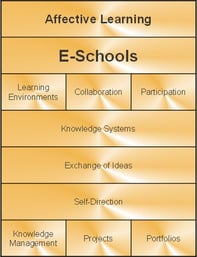Published on
The Untold Story of Noncredit Programs in Higher Ed

In the past 15 years, we’ve talked a lot about activities that don’t earn college credit—at gatherings, on technical review panels, and in papers. The conversation largely revolves around the lack of national data on the scope of noncredit studies at colleges and universities, even though they’re not new.
The need for more data became apparent through my recent work researching the history of postsecondary credentials for the National Postsecondary Education Collaborative (NPEC), a research and development group in the U.S. Department of Education’s National Center for Education Statistics (NCES).
What I learned surprised me, but perhaps it shouldn’t have. In hindsight, some of these realizations were in plain sight the whole time, but they make the path forward clearer.
Higher ed industry and government leaders already developed a way to measure noncredit activity in the 1960s and ’70s.
This national task force, comprised of 34 governmental and nongovernmental organizations, created the ubiquitous continuing education unit (CEU). Each CEU represents ten hours of participation in an organized continuing education experience under responsible sponsorship, capable direction and qualified instruction.
It’s time to update the work the original task force started by bringing everyone together once again to revisit the CEU to understand its use over time, to consider whether it signifies a credential marking the completion of a learning activity or if it mirrors the full-time equivalent in the credit-bearing programs, and to determine if a badge is worth awarding at completion.
NCES deployed three surveys of higher education institutions in the 1970s to understand noncredit activity.
Building upon the work of the national task force, NCES administered a survey to a sample of colleges and universities to better understand the extent of noncredit activity on campuses.
Surprisingly, three surveys sent to colleges in the 1970s successfully documented noncredit activity. Regardless, NCES spent the last 20 years assembling experts to explore the development of a comprehensive data collection survey for these activities. NCES should readminister the survey to get a handle on evolving trends over time, while incorporating additional inquiries pertinent to contemporary practices and emerging insights.
Noncredit academics are prevalent at universities, too.
Too often, public discourse is about noncredit activity at community colleges, and this perspective is woefully incomplete.
The reports from the 1960s and 1970s point to a very active scope of noncredit activities. For example, the 1977-78 survey showed 70.7% of public universities offered noncredit activities, compared to 19% of private two-year colleges. Noncredit activities occur daily at universities, but they’re not part of the national dialogue. Making that value abundantly clear is paramount, as we see a growing segment of the population questioning the value of education after high school.
It is beyond time to act.
It’s been more than 40 years since the public, policymakers, potential students and employers understood the breadth of learning occurring in their community. It’s time to bring all college learning—credit and noncredit—more clearly and deliberately into plain sight.
But we don’t have to start from scratch. The Education Resources Information Center (ERIC) database has a wealth of information from efforts before us, and it’s a good place for legislative analysts, researchers, policy analysts, authors and practitioners to start.



